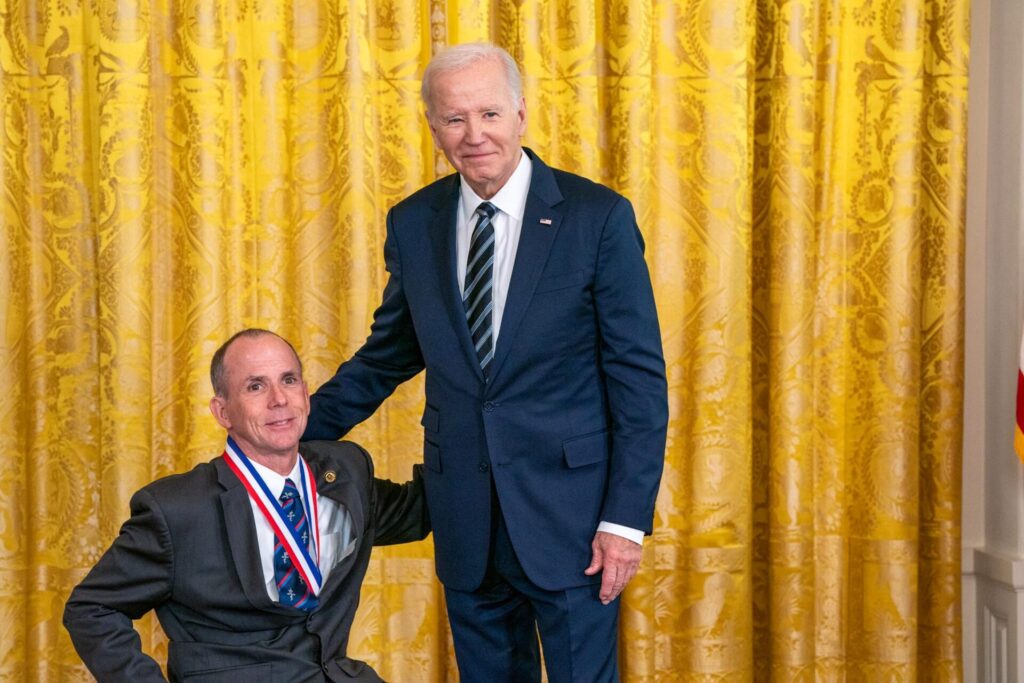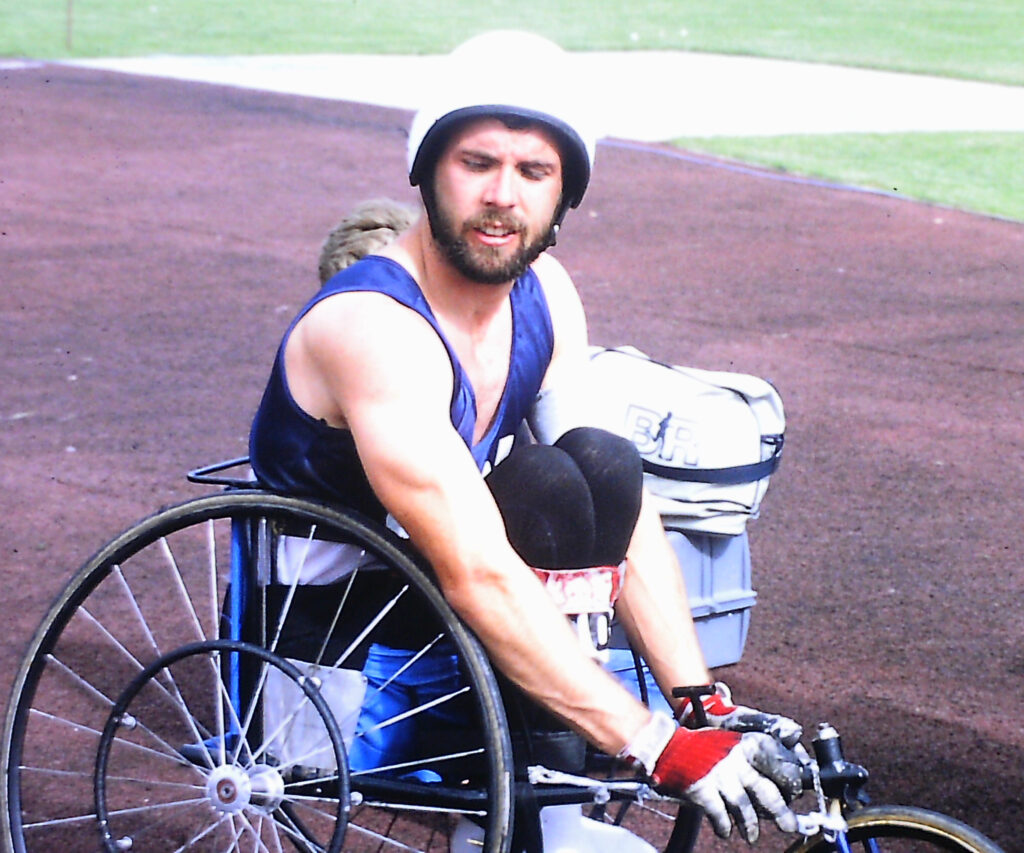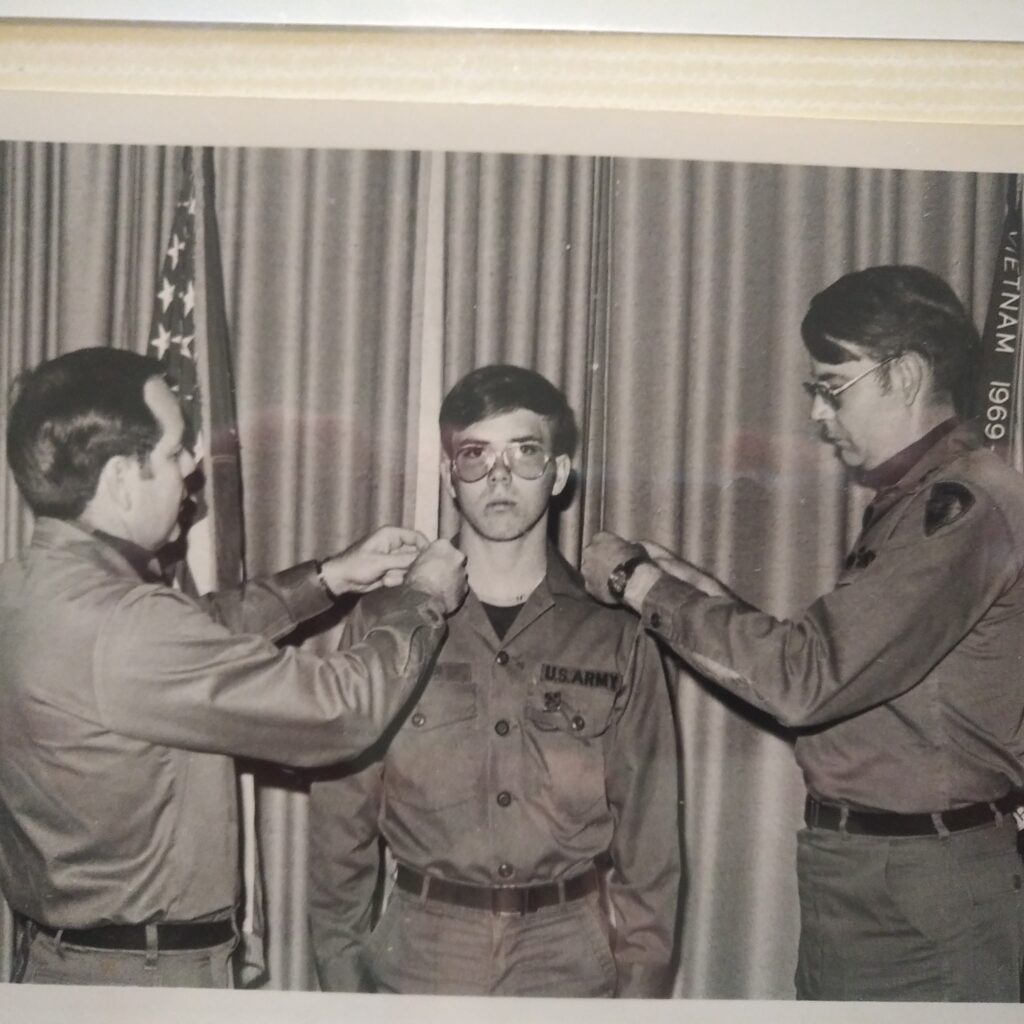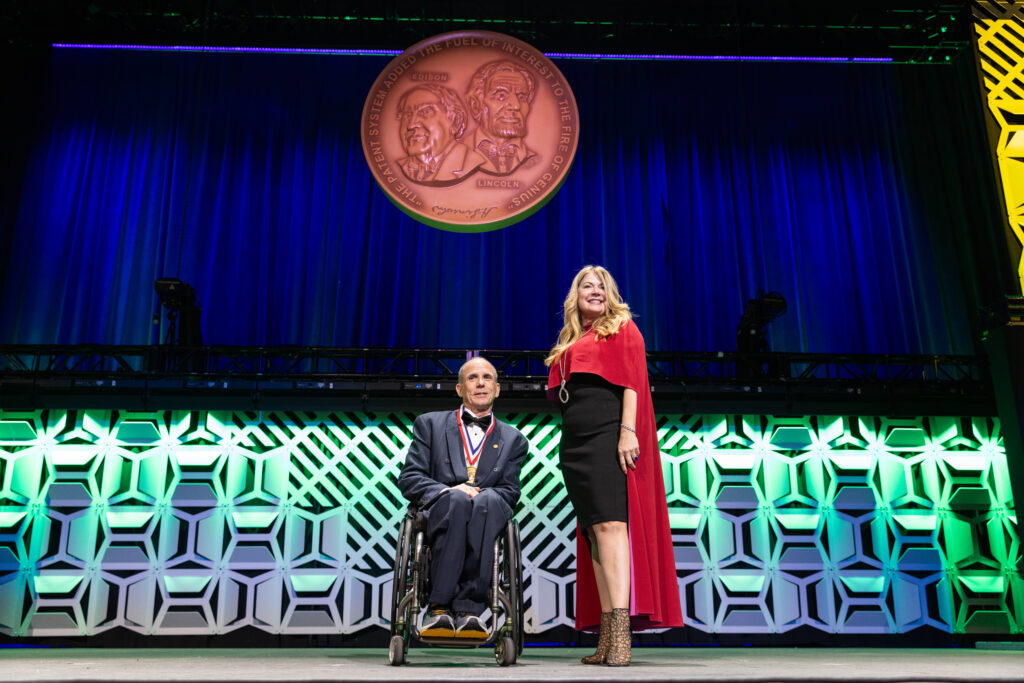From Campus to Capitol: Paralyzed Veteran and Cal Poly Grad Awarded Presidential Medal for Wheelchair Tech Innovations

One of the country’s most consequential inventors and influential leaders in the field of bioengineering began developing assistive technology that would help millions of wheelchair users as he navigated the hills of Cal Poly.
A wheelchair wasn’t in the plans for San Luis Obispo native Rory Cooper, but that changed on a summer day in Germany when a bus sideswiped his bike on a busy road, sending him into the path of an oncoming semitruck.
Cooper, who was weeks away from concluding a tour of duty with the Army, sustained a spinal cord injury that left him paralyzed from the waist down. Doctors said he would never walk again.

The sergeant spent three months in hospitals in Germany and the U.S. instead of joining Cal Poly’s freshman class in the fall of 1980, yet he was unwavering in his desire to earn an engineering degree at his hometown campus.
Cooper deferred enrollment until winter quarter, giving himself two months to practice maneuvering the 80-pound chrome and steel wheelchair that weighed slightly less than he did. Laps around Laguna Lake Park revealed the chair’s deficiencies as it began to break under the strain, sending Cooper into his parents’ automotive shop to find solutions.
More than 20 patents and myriad accolades later, Cooper has improved the mobility and function of people with disabilities around the world through cutting-edge research and engineering.
He was invited to the White House in October to receive the National Medal of Technology and Innovation – the nation’s highest honor for technological achievement – from President Biden. Two days later, he was inducted into the National Inventors Hall of Fame, joining the ranks of transformative figures such as Thomas Edison, George Washington Carver and Steve Jobs.
“Not too many people who go to Cal Poly think they will earn a medal from the president,” said the electrical engineering graduate. “Certainly not me.”
•••
Cooper was raised in a family steeped in mechanical ingenuity, with a mother skilled as an automotive mechanic and a father who balanced teaching biology at Cal Poly with working in the family’s shop.

Laguna Lake was his backyard and the target of his Eagle Scout project in the early ‘70s. Cooper petitioned San Luis Obispo officials to save the wetlands area from development by collecting 1,000 signatures and inspiring the creation of Laguna Lake Park.
Fifty years later, he was named a 2023 recipient of the Distinguished Eagle Scout Award for his contributions as an inventor, engineer and disability advocate. Very few people receive the award from the Boy Scouts of America each year.
Cooper graduated from San Luis Obispo High in 1977 and immediately enlisted in the Army.
“I wanted to see the world, serve my country and get a college education,” he said.
While stationed in Germany, he met and later married his wife, Rosemarie. He was planning to ride to work with her that fateful summer day, but bike trouble delayed his departure and he set out alone. Rosemarie reunited with her husband at the hospital and has stayed by his side ever since.
Cooper arrived at Cal Poly at the start of 1981 with a better wheelchair, but the hilly campus remained a formidable challenge.
“I felt like I was constantly moving uphill,” he said. “It took me awhile to plan a schedule that would allow me to move more laterally.”
He was the only electrical engineering major in a wheelchair and possibly the only one in the College of Engineering, but he received overwhelming support from the campus community.
Electrical engineering professors Bill Horton and Saul Goldberg served as his advisers and invaluable resources through his years at Cal Poly and beyond. “They took me under their wing,” Cooper said.
Professor Emeritus Goldberg called Cooper one of his greatest students.
“He was very bright and didn’t let his handicap get in his way. I’m not at all surprised by his success,” he said, adding that a reward of teaching is students like Cooper.
Staff modified lab benches to suit Cooper’s needs, and when a lab was on the upper floor of a building without an elevator, Army ROTC students would carry him up the stairs. On a recent visit to Cal Poly, he relayed his thanks to the unit.
An avid athlete, Cooper joined the Cal Poly track team for workouts while training for wheelchair track and road races at regional and national meets. During his events, Cooper proudly wore a Mustang uniform, a gift from the team’s coach.

Cooper, alongside his friend and fellow Cal Poly alumnus Bob Gibson, later took part in the 1988 Seoul Paralympics, earning a bronze medal in the 4×400-meter wheelchair relay. Additionally, over four decades of participating in the National Veterans Wheelchair Games, he amassed over 250 medals.
He capped off his Cal Poly career with a noteworthy senior project: designing a wheelchair equipped with a stepper motor that enabled the user to rise to a standing position for conducting experiments at a lab bench.
“My claim to fame was that my senior project worked,” Cooper said, laughing.
His exceptional design garnered him an HP calculator in a student competition, signaling the onset of his journey as a celebrated inventor.
•••
Cooper redesigned his wheelchair design at least eight times while completing his electrical engineering degrees, receiving his bachelor’s in 1985 and master’s in 1986. He also holds a doctorate in electrical and computer engineering with a focus on biomedical engineering from UC Santa Barbara.
In 1994, he established what has become the nation’s leading laboratory in assistive technology, drawing on the principles of collaboration and Learn by Doing that shaped his college education.
“The idea for the Human Engineering Research Laboratories was to bring together engineers, clinicians, statisticians, businesspeople and students to work in teams and not in specialized laboratories,” he said about the joint center of the Department of Veterans Affairs and the University of Pittsburgh.

Over the last three decades, teams have developed a variety of wheelchair models, including a waterproof wheelchair for water park access and a throwing chair to enhance performance in shot put, javelin and discus competitions.
Cooper and his colleagues also created a new wheelchair pushrim that has a larger surface for palm pushing and a thumb trough, making it easier to grip, push and brake. Additionally, they enhanced motorized wheelchairs with a digital joystick that adjusts to individual hand and arm functions, allowing precise control of speed and direction through pressure sensing.
“Our technology has reached millions across the globe,” he said. “Most everyone who uses a power chair uses aspects of our technology.”
As 2023 ends, Cooper is reflecting on a remarkable year that saw him inducted into the National Inventors Hall as part of their 50th year celebration and honored by President Biden, who saluted Cooper before bestowing on him the National Medal of Technology and Innovation.
Cooper and his wife, Rosemarie, were leaving the White House when he spotted a photo of former President George H.W. Bush signing the Americans with Disabilities Act, the world’s first comprehensive civil rights law for people with disabilities, in 1990.
He recalled asking Rosemarie to take his picture with the image to preserve the memory.
“That moment marked a milestone for America,” he explained. “I hope to further that legacy by continuing to invent new technology that helps make the world a more inclusive place for everyone.”
